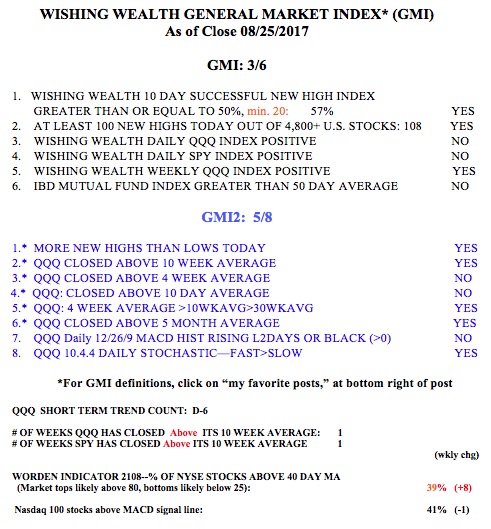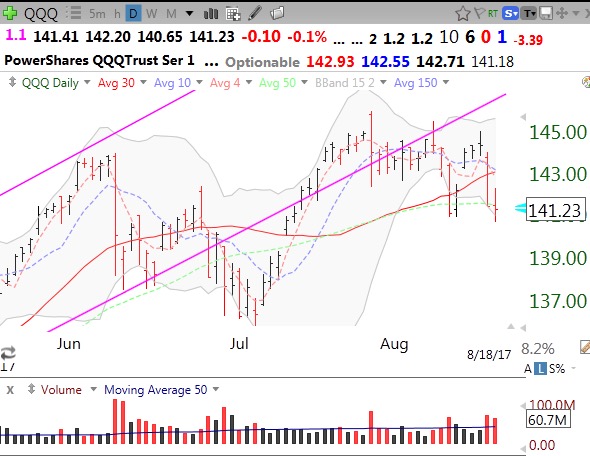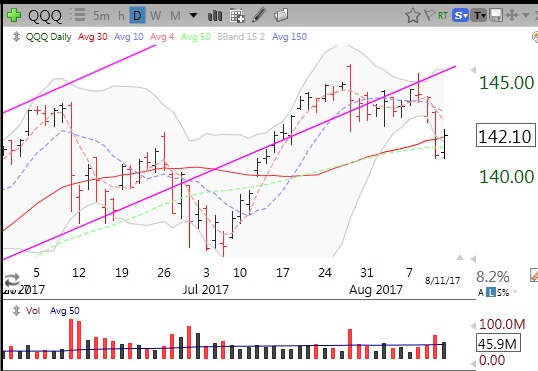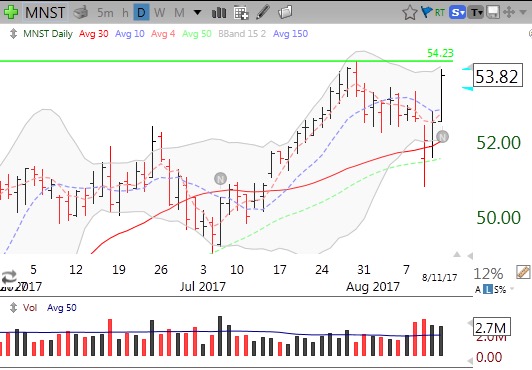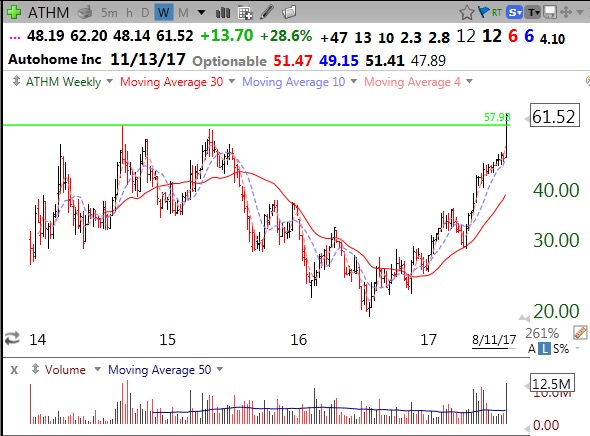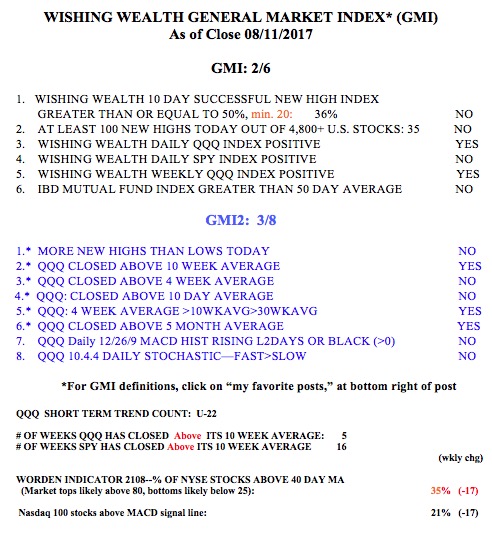I own a little $SQQQ (QQQ 3X inverse ETF) and am sitting in cash in my trading accounts. My university pensions remain invested in mutual funds. Entering weakest period of year for market and QQQ is on the edge of a cliff. BUT SPY and QQQ are back above their 10 week averages. The majority of my possible long set-ups last week did not work out. Better to sit it out for now.
General Market Index (GMI) table
New $QQQ short term down-trend; in cash; Come back at Halloween?
With the GMI at 1, 6x more new 52 week lows than new highs, and only 8% of recent bounce on support set-ups working, I am on the side-lines in my trading accounts. I had written that declines often materialize after quarterly earnings are mainly out. We are now in the post earnings lull during the weakest market months of the year. Remember, “Sell in May and Go Away–Come Back at Halloween.” I have seen many declines end in October just before 3rd quarter earnings were released. As for me, I will be posting again next Wednesday evening.
Note all of the recent red volume spikes (distribution days) for the QQQ.
$QQQ short term up-trend holds but GMI turns Red; $MNST bounces and $ATHM has GLB
The QQQ short term up-trend held on Friday. However, the GMI has turned Red. I revised Thursday’s GMI to 2, when I discovered that its IBD mutual fund component had turned negative. With Friday’s GMI reading of 2, it triggered a Red signal. In recent years, a GMI of Red has sometimes occurred briefly at the bottom of a decline, so we will have to wait to see what happens this time. When the GMI reads 0, I become very defensive. Furthermore, the put/call ratio was 1.14 on Friday, indicating a significant amount of bearishness among options traders, which usually occurs a day or so before the markets bounce. The QQQ found support on its daily 15.2 lower BB (and 50 day average) on Friday, see daily chart below. If QQQ holds above 140.89, I suspect we will get a decent bounce.
Another stock that bounced last week from its lower BB and 50 day average and may move on to a GLB to an all-time high is MNST. I nibbled at MNST on Friday and placed a sell stop below Friday’s low.
During weak markets, few stocks hit new all-time highs and it is easier to identify possible leaders. As this weekly chart shows, ATHM had a GLB last week on above average volume. ATHM is likely extended now, and I will wait for a good entry, if this market holds.
The GMI registered below 3 for two consecutive days, triggering a change to Red.
